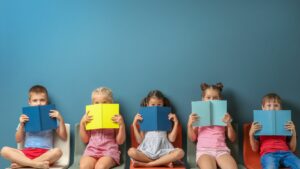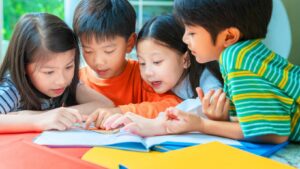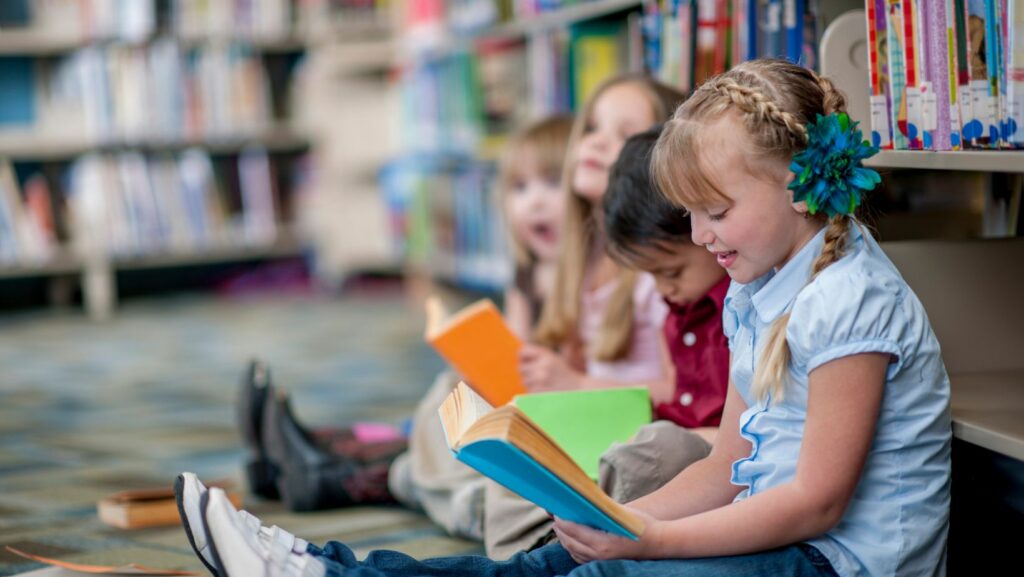Delving into the enchanting world of children’s literature books opens up a treasure trove of imagination and learning. These timeless pieces not only entertain young minds but also play a pivotal role in their development. From whimsical fairy tales to adventurous narratives, children’s books are crafted to ignite curiosity, teach valuable lessons, and foster a lifelong love of reading. If you’re passionate about education and supporting students, consider exploring SEN teaching assistant jobs as a rewarding career path.
Children’s Literature Books
From Oral Folk Tales to Printed Stories
 Children’s literature books have undergone a remarkable evolution, transitioning from the oral folk tales of ancient times to the vast collection of printed stories available today. Initially, these stories were passed down verbally from one generation to the next, serving not just as entertainment but also as a means to impart moral lessons and preserve cultural heritage. With the advent of the printing press in the 15th century, literature became more accessible, allowing these tales to be recorded and shared widely, laying the groundwork for the diverse world of children’s literature that exists today.
Children’s literature books have undergone a remarkable evolution, transitioning from the oral folk tales of ancient times to the vast collection of printed stories available today. Initially, these stories were passed down verbally from one generation to the next, serving not just as entertainment but also as a means to impart moral lessons and preserve cultural heritage. With the advent of the printing press in the 15th century, literature became more accessible, allowing these tales to be recorded and shared widely, laying the groundwork for the diverse world of children’s literature that exists today.
This transformation brought forth a golden age of children’s literature in the 19th and early 20th centuries. Authors like Lewis Carroll, with his enchanting tale of “Alice’s Adventures in Wonderland,” and Beatrix Potter, with her charming story of “The Tale of Peter Rabbit,” began crafting stories specifically aimed at young readers. These stories, rich in imaginative landscapes and whimsical characters, not only entertained children but also encouraged them to dream and explore the bounds of their creativity.
The Importance of Children’s Literature
Children’s literature books play a pivotal role in shaping young minds, serving as a bridge between learning and imagination. This genre not only entertains but also imparts valuable lessons, fostering development and nurturing a lifelong love for reading. Through a mix of traditional tales and contemporary stories that reflect diverse and inclusive themes, children’s literature encourages readers to dream, explore, and think critically about the world around them. As technology evolves, so does the medium through which stories are told, making literature accessible to more children and ensuring that the joy of reading adapts to the digital age. In essence, children’s literature stands at the heart of educational and entertainment efforts, guiding young readers through their formative years.
Elements That Make a Great Children’s Book
 Great children’s literature books share key attributes that set them apart, enriching young minds and captivating their imaginations. A standout children’s book often features:
Great children’s literature books share key attributes that set them apart, enriching young minds and captivating their imaginations. A standout children’s book often features:
-
Engaging Storylines: These books present stories that are both accessible and fascinating to young readers, encouraging them to turn page after page.
-
Memorable Characters: Characters in children’s books should be relatable and inspiring, allowing readers to see themselves in the stories and learn from the characters’ journeys.
-
Educational Value: Beyond entertainment, exceptional children’s literature provides lessons on life, moral values, and sometimes even academic concepts in a manner that’s understandable for children.
-
Vibrant Illustrations: For many children’s books, especially those for younger readers, illustrations play a critical role in storytelling, adding depth to the narrative and engaging children’s visual senses.
-
Cultural and Social Inclusion: Reflecting the diversity of the world, great children’s books include characters and settings from various cultures and backgrounds, promoting inclusivity and understanding from an early age.
Popular Genres in Children’s Literature
Fantasy
Fantasy holds a premier spot in children’s literature, captivating young minds with tales of magic, adventure, and the battle between good and evil. Classics like “Harry Potter” series by J.K. Rowling and “The Chronicles of Narnia” by C.S. Lewis exemplify how fantasy can encourage problem-solving and moral discernment.
Fairy Tales and Folklore
Rooted in cultural storytelling traditions, fairy tales and folklore are pivotal in introducing children to moral lessons and cultural heritage. Stories like “Cinderella” and “Jack and the Beanstalk” merge the real with the fantastical, offering teachings on bravery, kindness, and resilience.
Picture Books
For early readers, picture books combine vivid illustrations with simple text to tell stories. These books, such as “Where the Wild Things Are” by Maurice Sendak, play a crucial role in visual literacy and language development, making them essential for preschool-aged children.
